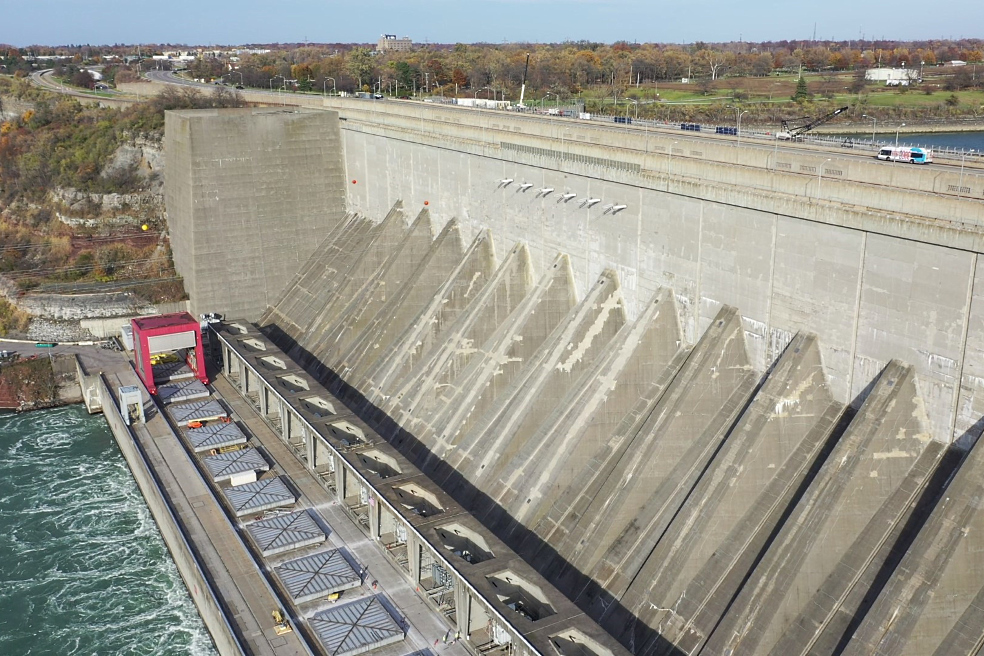According to forecasts by the International Energy Agency, this figure will reach 2000 GW by 2050, which will require huge investments, including government support and long-term bank funding for hydropower plants.
The development of hydropower, which began in the second half of the 19th century, ensured stable economic growth for years to come.
Each HPP is a masterpiece of engineering, embodied in concrete and steel by dozens and even hundreds of large and small contractors, equipment manufacturers, suppliers, developers, engineering firms. These are colossal hydrotechnical structures with many miles of adjacent artificial seas that require many billions of investment and many years of planning and construction.
The statistics of bank funding for hydropower plants continues in a green transition era, with many nations wary of unpredictable nuclear power.
The construction of modern hydroelectric power plants involves large commercial loans, often issued by syndicates of the largest banks and international financial institutions.
Viola Funding Limited offers financing for hydropower projects in different countries. Our specialists develop optimal financial models and customized solutions for each project.
Bank funding of hydropower plants
hydroelectric power plants are becoming more technologically advanced, which entails rising costs for new turbines.
To better understand the importance of long-term bank loans in the construction of hydroelectric power plants.
Today, hydropower are considered among the most expensive generation technologies, with cost ranging from 2 to 5 million euros per 1 MW of installed capacity.
These numbers are on the rise as technology and materials become more expensive and suitable sites for new hydropower plants become scarce. This means more earthworks, more resettled areas, more environmental protection measures and more additional costs. Of course, large HPPs look more attractive in terms of cost per megawatt of installed capacity, but everything rests on the lack of suitable places on rivers with adequate elevation changes and wilderness areas along the banks.
However, €50-100 million bank loans can solve numerous problems of small companies developing such projects.
The main instrument of bank financing of hydroelectric power plants is the so-called investment loan.
The construction of a hydropower plant is a complex and multifaceted project with many risks that capital providers try to take into account. For this reason, careful preparation of the loan application is essential for a positive outcome. Detailed business plan, engineering documentation, financial documentation, reporting and forecasts, environmental permits, licenses and other project-related documents form the basis of future financial relationships at a very early stage.
Commercial and industrial (C&I) loans for hydropower projects
By definition, C&I loans include any loans made to companies not to individuals (also known as business loans). In most cases, we are talking about short-term financing, which is almost always provided with collateral.
Industrial & commercial loan products are listed below:
• Long-term equipment financing. • Letters of credit. • Bridge loans. • Factoring etc.
Asset-based lending is used by energy companies that already have certain assets but require additional working capital to develop and grow their business.
A bridge loan, which is considered an auxiliary or intermediate financial instrument, is included in the group of short-term loans. The interest rate on a bridge loan is high, but there is a high demand for it in all industries.
Some reasons for applying for a bridge loan:
• Purchase of assets, equipment or land at a bargain price.
• Covering the current liabilities of the hydropower project.
• Business development, increasing the installed capacity, etc.
It is suitable for companies that have a difficult situation requiring external borrowing, but for some reason cannot get a traditional loan.
At the same time, the borrower must be sure of receiving funds in the short term to repay the debt. It is extremely undesirable to take such a loan if there is nothing to close it in the near future. Often, hydropower borrowers will take out such a loan against a quick sale of assets or before obtaining a larger loan at a low rate. As a rule, a bridge loan is issued for a period of no more than 12 months.
As for the letter of credit, it is a more specific tool in the context of commercial and industrial loans.
LoC refers to a letter from a bank that guarantees timely payment from the buyer to the seller for goods shipped or services rendered.
Essential role for bank funding for hydropower plants is played by the state, which acts as a monitors the financing of strategic industry.
The interest of governments is natural, because hydropower remains one of the most stable and predictable sources of electricity generation in industrialized countries. Moreover, 90% of the balancing capacity in the world is in pumped storage electricity and 10% in other technologies such as thermal power plants or batteries.
It is a critical tool for balancing unpredictable green energy capacities in the grid, and the world will not introduce another model on an industrial scale in the near future.
Each of the listed instruments of bank financing is designed to solve certain problems in the process of developing the energy business. The right choice of funding method is one of the most important conditions for the prosperity of hydropower sector.
Viola Funding Limited is ready to offer long-term bank financing for hydroelectric power plants and related infrastructure.
We are engaged in long-term loans, project finance, financial engineering, modeling and consulting, satisfying the full range of financial needs of our clients.
We provide a full range of financial and consulting services in Europe, the USA, Latin America, Africa, the Middle East, as well as in South and East Asia.
Contact us for a consultation and to learn more about financing options.
eMAIL:[email protected]
Website:https://viola-funding.com/
